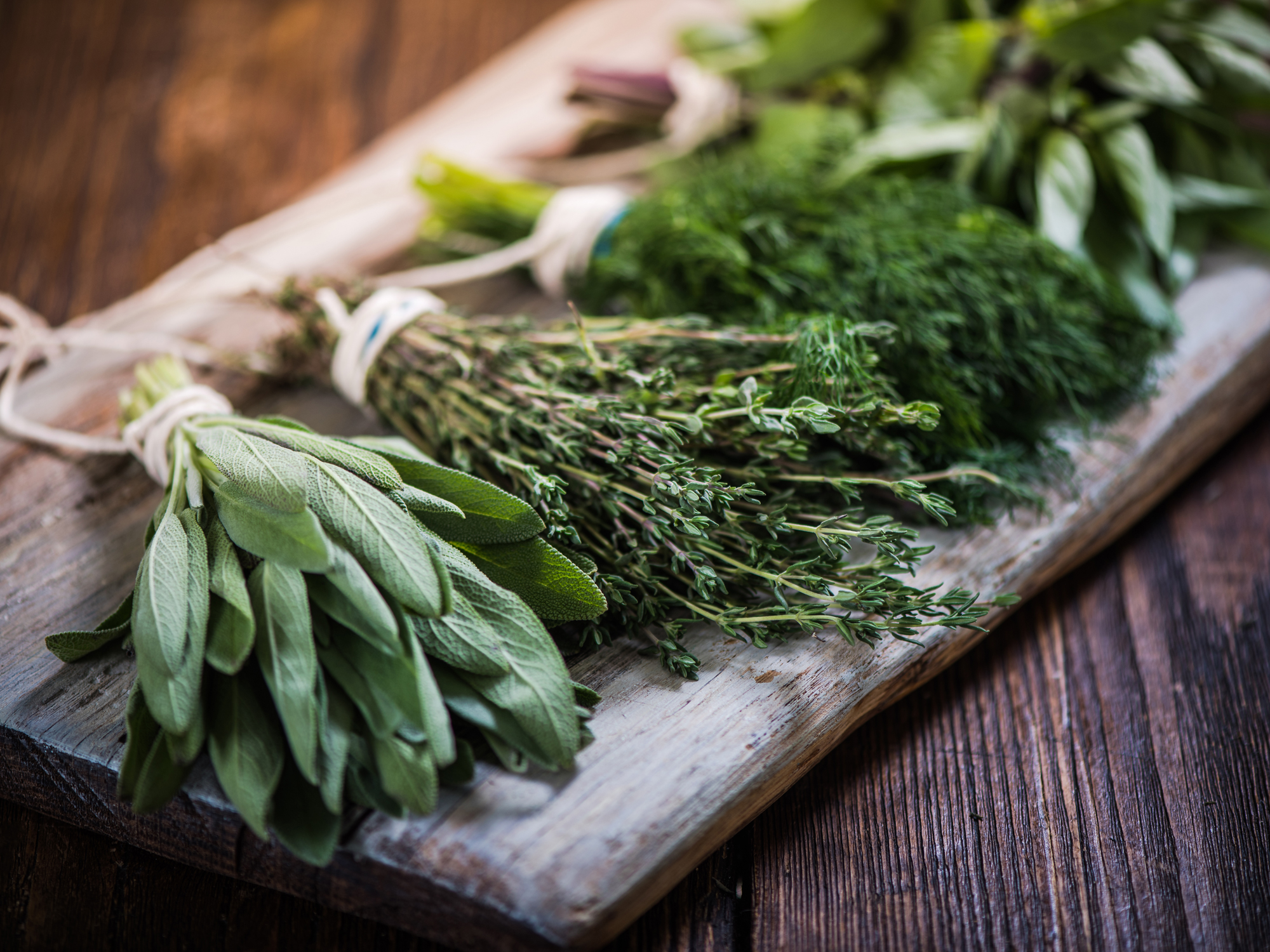Get Easy Health Digest™ in your inbox and don’t miss a thing when you subscribe today. Plus, get the free bonus report, Mother Nature’s Tips, Tricks and Remedies for Cholesterol, Blood Pressure & Blood Sugar as my way of saying welcome to the community!
4 pain-relieving herbs to have at every meal

For decades, mainstream medicine has had little to offer pain sufferers other than dangerous and addictive drugs. But there may be light at the end of this tunnel…
You may have seen a post by my colleague Dr. Mark Wiley last week that shared the good news that doctors are finally admitting what’s really best for back pain, and it’s not their dangerous meds.
This news opens up a wide swath of alternative treatments to people who suffer from chronic pain — like arthritis or back pain or any other painful chronic inflammatory condition — including tried and true natural solution that some broad-minded health practitioners have used for years… some even centuries.
Consider the power of healing plants, for example. Traditional Chinese Medicine and Ayurvedic Medicine could provide thousands of exotic medicinal plant cures to ease any number painful conditions.
But, as it turns out, you can also rely on simple culinary herbs for their potent anti-inflammatory and pain-relieving properties that are likely in your kitchen right now…
Related: The spice that stops age-related vision loss
Most culinary herbs — the kind you can regularly and easily use when you prepare meals — contain high levels of polyphenols that exert a range of powerful health benefits. Let’s look at some of them more closely…
#1: SAGE
Sage contains compounds that influence our gut bacteria and directly decrease proinflammatory molecules, while at the same time increasing anti-inflammatory molecules.
Traditional folk medicines have relied on sage for treating inflammation, symptoms of menopause and to promote better memory and concentration.
- Put some leaves into pesto with other herbs.
- Make a sage butter for your next fish dish.
- Roast a chicken with fresh sage and lemon inside the cavity.
#2: BASIL
For such a sweet, enjoyable herb, basil packs a punch on the anti-inflammatory front.
Like sage, it targets a range of proinflammatory molecules and enhances the secretion of anti-inflammatory ones, targeting an even wider range of these molecules than sage.
Basil also prevents oxidation of LDL cholesterol, which dramatically decreases your risk of cardiovascular disease.
Basil has been used in traditional medicine for inflammation, colic, poor digestion, gas, nausea, insomnia, anxiety and coughs.
- Make a fresh basil pesto.
- Chop finely and eat fresh in salads.
- Add to stir fries, omelettes, soups and sauces
- Try watermelon and basil iced tea.
#3: OREGANO/ THYME
These two herbs have very similar properties. Aside from influencing molecules like both basil and sage, these herbs prevent oxidative damage and support healthier cells throughout the body.
Oregano and thyme have both been shown to attack inflammation associated with metabolic syndrome — symptoms of which are insulin resistance, weight gain, high cholesterol, high blood pressure and high blood sugar.
Additionally, oregano has been used in traditional medicine for acute inflammation, aching muscles and as an antiseptic for skin sores.
Thyme has an anti-inflammatory and antibiotic influence on coughs, colds, and digestive and urinary issues.
- Add these herbs to tomato-based sauces.
- Infuse meats with herb-rich marinades.
- Blend into burger patties or sausage.
#4: PARSLEY
Aside from parsley’s anti-inflammatory potential, it also helps regulate blood glucose levels and decrease any damage to liver cells, while at the same time supporting peak liver function.
Furthermore it promotes healthy cholesterol levels and supports healthy heart function by reducing hypertension.
- Use parsley as a garnish for every meal.
- Make a tabouleh side salad.
- Use as an addition in all your herb blends.
Because culinary herbs are so beneficial, aim to eat them as often as you can by incorporating them into most of your meals. To experience the benefits of their potent polyphenols, they can be eaten both in their fresh or dried forms.
Best of all, culinary herbs add flavor and aromas to meals that stimulate your senses and provide a more enjoyable eating experience.
Bon Appetit!
Editor’s note: Did you know that when you take your body from acid to alkaline you can boost your energy, lose weight, soothe digestion, avoid illness and achieve wellness? Click here to discover The Alkaline Secret to Ultimate Vitality and revive your life today!
Sources:
-
Rubio, et al. Recent Advances in Biologically Active Compounds in Herbs and Spices: A Review of the Most Effective Antioxidant and Anti-Inflammatory Active Principles. Critical Reviews in Food Science and Nutrition. 2013;53:943–953.
-
Jungbauer, et al. Anti-inflammatory properties of culinary herbs and spices that ameliorate the effects of metabolic syndrome. Maturitas. 2012;71:227– 239.
-
Mueller, et al. Anti-inflammatory activity of extracts from fruits, herbs and spices. Food Chemistry. 2010;122:987–996.
-
Bower A, et al. The Health Benefits of Selected Culinary Herbs and Spices Found in the Traditional Mediterranean Diet. Critical reviews in food science and nutrition. 2016;56(16):2728-46.













